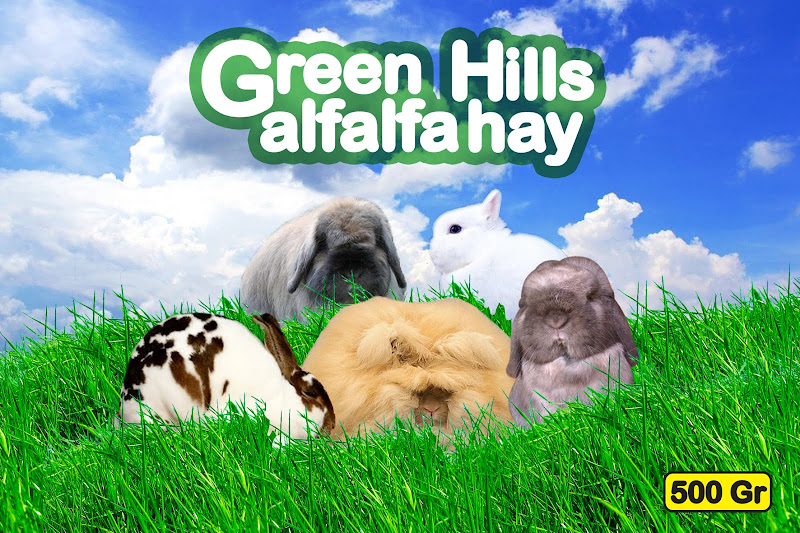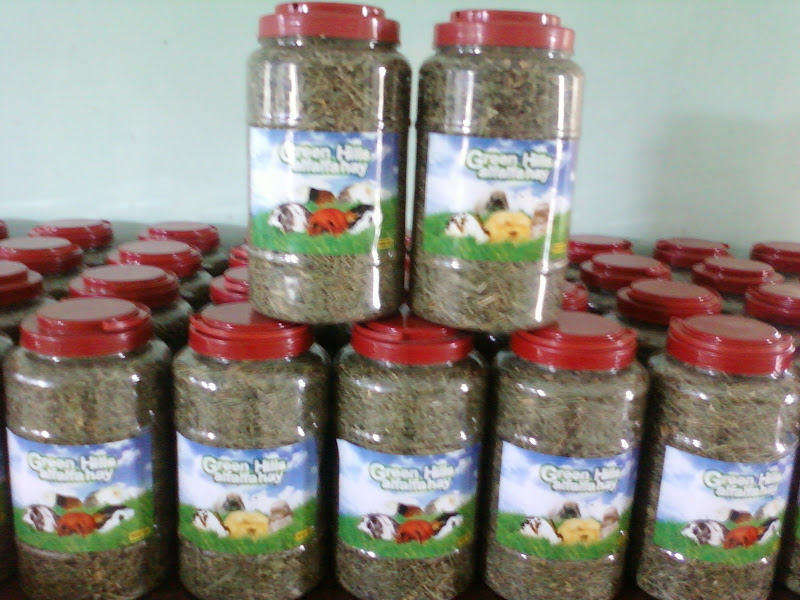"Legs and Points" in showing English Angoras
By
Betty Chu
________________________________________
The first time I went to a rabbit show, I saw a teenager holding a cute rabbit. I commented, "That is a nice rabbit!" She answered, "Oh yes, she has two legs."
I looked and looked; this rabbit had four legs on its body, I couldn't figure out why she said they rabbit had only two. Recently, I was in a rabbit show. Two ladies came by and wanted to buy one of my bunnies. I said, "Both of his parents are grand champions. His papa has six legs and his mama has five legs." They gave me a blank stare. I realized then that they were as confused as I was years ago when I first attended a rabbit show.
In showing English Angora rabbits, two varieties are accepted: White and Colored. The White variety includes: Ruby-eyed white, Blue-eyed white and Pointed white (Himalayan marked). The Colored variety includes: Black, Blue, Chocolate, Lilac, Cream, Fawn, Red, Chestnut Agouti, Blue Agouti, Chinchilla Agouti, Lynx Agouti, Opal Agouti, Blue Cream, Chocolate Cream, Siamese Sable, Smoke Pearl and Tortoise-Shell, etc. Each variety consists of four classes: Sr. Buck, Jr. Buck, Sr. Doe, Jr. Doe. Senior is defined as 6 months of age and over or meets the minimum senior weight; a junior is defined as less than 6 months old. A junior can compete in a senior class, but a senior cannot compete in a junior class. The judging is done by the American Rabbit Breeders Association, Inc. (ARBA) licensed judges according to the STANDARD OF PERFECTION.
Unless all the rabbits entered are unworthy of an award, the judge usually will place the animals from the last to the first. If the class has at least five rabbits shown and these five rabbits are entered by three or more different exhibitors, the first place rabbit gets a leg. Disqualifications are counted in the number of animals shown except when a wrong sex is entered, such as, a buck is entered as a doe. If there are two white senior bucks and three white junior bucks entered, the first place senior buck and the first junior buck do not get a leg automatically after winning the first place. However, provided that these five white bucks are entered by three or more exhibitors, if the first place white junior buck wins over the senior, the junior wins a leg, the senior doesn't, and vice versa. If one white senior buck, one white junior buck, two white senior does and one white junior doe are shown, of these four classes, only the Best White wins a leg if these five rabbits are entered by three or more exhibitors.
During the show, a judge will select in each variety the first place winner of the senior buck, junior buck, senior doe and junior doe, usually in this order. In the same variety, the senior buck will be compared against the junior buck and the winner stays on the table. The senior doe will be compared against the junior doe, the winner stays. Then the winner buck will be judged against the winner doe. The winner of the two will be the Best of Variety (BOV) and the other will be the Best Opposite Sex of the Variety (BOSV). At this time, there should be four rabbits on the table, a colored buck, a colored doe, a white buck and a white doe. The Best White will be judged against the Best Colored and the winner is the Best of Breed (BOB). If the Best of Breed winner is a doe, then the two remaining bucks will be compared and the winner is the Best Opposite Sex of the Breed (BOS). If the BOB winner is a buck, then the two remaining does will be compared for the BOS.
In addition to the above-mentioned eight classes, there are two additional classes for wool competition: Colored Wool and White Wool. In order to compete in wool, the rabbit has to be entered in one of the eight regular classes and must not have been disqualified in the regular classes except for the ones who were disqualified for wrong sex. These two classes do not differentiate between bucks or does, juniors or seniors. The only difference is whether the wool is colored or white. Best White Wool and Best Colored Wool are selected by the judge. Of the two, the judge picks the Best Overall Wool winner. These two classes are mainly for honor since there is no leg awarded regardless of the number of animal entered. There are sweepstakes points awarded, though.
To summarize, it takes at least five rabbits and three exhibitors to qualify a leg for one rabbit. If a rabbit wins three legs which were awarded by at least two different judges, with at least one leg being a senior leg, and this rabbit is registered by an ARBA licensed registrar, this rabbit qualifies to become a Grand Champion. The owner mails the three original leg certificates with registration number and $4.00 to the secretary of the ARBA. The secretary of the ARBA will send back a Grand Champion Certificate with a grand champion number assigned to this rabbit. One rabbit qualifies for one grand champion certificate in his lifetime. An owner still can show this rabbit after being "granded", the legs earned after that are just for the honor rather than working toward the certificate.
One might ask why would anyone want to show a rabbit who is already a grand champion? The answer could be: just for the fun, for the honor and/or for the sweepstakes points. What are the sweepstakes points? If the exhibitor is a member of the National Angora Rabbit Breeders Club (NARBC), and the shows he attended are sanctioned by the NARBC, the club sweepstakes chairperson keeps a record of all the show winnings of each member. The club newsletter publishes a list of the top ten highest point exhibitors in the nation. How are the sweepstakes points calculated? Here is an explanation:
• lst place rabbit wins 6 points multiplied by # of rabbits in the class,
• 2nd place rabbit wins 4 points multiplied by # of rabbits in the class,
• 3rd place rabbit wins 3 points multiplied by # of rabbits in the class,
• 4th place rabbit wins 2 points multiplied by # of rabbits in the class,
• 5th place rabbit wins 1 point multiplied by # of rabbits in the class.
The BOB exhibitor gets l bonus point multiplied by # of rabbits in the breed, the BOS exhibitor gets 1/2 bonus point multiplied by # of rabbits in the breed. There are no bonus points for the Best of variety exhibitors. Starting from the beginning of 1989, the Best In Show exhibitor in an all-breed show gets 100 bonus points and the Best in Show exhibitor in the ARBA National Convention and in the National Angora Specialty Show gets 200 bonus points. No bonus point is awarded for regular specialty show Best In Show exhibitors. All points earned in the ARBA National Convention are doubled.
The big sweepstakes points exhibitors may or may not coincide with the winning exhibitors in the show circuits. An exhibitor may take two rabbits to a show and win the BOB and BOS but win very limited number of points if these two rabbits happen to be entered in small classes. Another exhibitor may not have won one single leg in a show but become the Best Display winner of that show. That is, he gets the highest sweepstakes points in that show by entering a large number of rabbits and winning many 2nd to 5th places. In addition to the number of rabbits entered and the size of the classes, another deciding factor in sweepstakes points ranking is the number of shows an exhibitor has gone to in the sweepstakes year. For NARBC, the sweepstakes year runs from August 1 to July 31 of the next calendar year. In summary, competing in sweepstakes takes quality, quantity and consistency.
The top ten sweepstakes winners are given an award in recognition of their accomplishment during the ARBA National Convention breed banquet. The ones who do not attend will receive their awards in the mail. Any member of NARBC who has won, in NARBC sanctioned shows, at least a BOB or a BOS will receive a silver colored pin and the one who has won at least one all-breed Best In Show will receive a gold colored pin.
The author has been the first place winner of the English Angora sweepstakes for 14 years consecutively since 1988. Her rabbits have won BOB and/or BOS in the ARBA National Conventions in 1987, 1988, 1990, 1991, 1992, 1993, 1994, 1995, 1997, 1999, 2000 and 2001. She is the breeder of the only Angora rabbit who has ever won the Best in Show in ARBA National Convention history.
Resource : http://www.bettychuenglishangora.com/





















